Berlin is Germany’s capital and largest city. It has a population of about 31/4 million and is one of Europe’s great cultural, political, and economic centers.
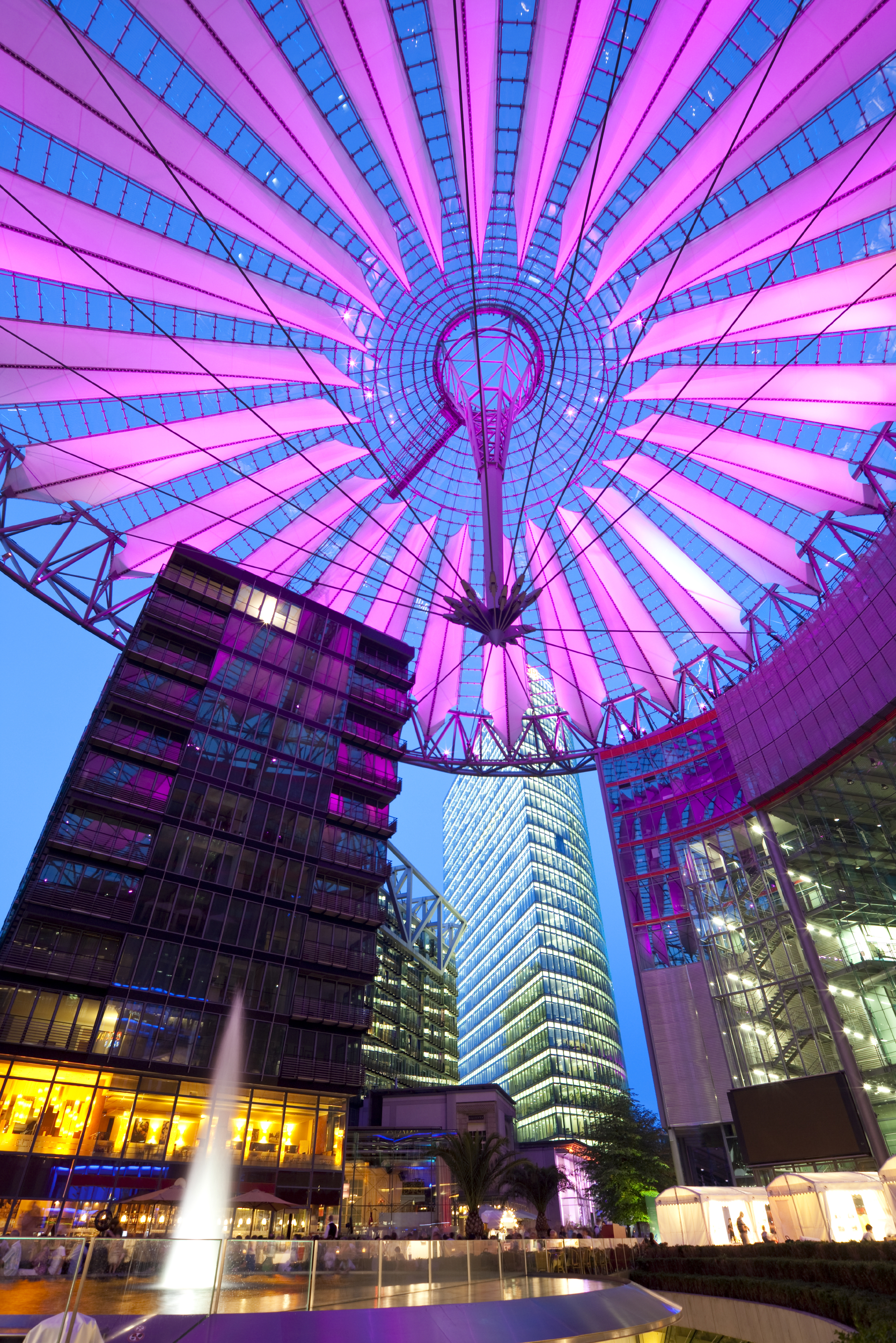
Berlin developed as a trading village about A.D. 1200. Over time, its location at the junction of the Spree and Havel rivers—a trading crossroads—helped to establish its importance. In the 1600’s, Berlin became the capital of Prussia, an emerging German state. Two centuries later, in 1871, Berlin became the capital of the new nation of Germany.
Berlin’s darkest period began with the rise to power in Germany of Adolf Hitler and the Nazi Party in 1933. During World War II (1939-1945), Germany and other Axis powers fought the Allies, which included France, the Soviet Union, the United Kingdom, and the United States. Berlin was wrecked by Allied bombs and the Soviet Army.
After Germany’s defeat in 1945, the victorious Allies divided the nation into two sectors (districts), Communist East Germany and non-Communist West Germany. Berlin was divided into Communist East Berlin and non-Communist West Berlin. East Berlin became the capital of East Germany. Bonn was made West Germany’s capital. The divided city played an important role in the Cold War, a power struggle between Communist and non-Communist nations. In 1961, during the Cold War period, the Communist East German government blocked access from East Berlin to democratic West Berlin by building the Berlin Wall, a high, heavily guarded barrier.
In 1989, the East German government collapsed, and the Berlin Wall was knocked down, symbolizing the end of the Cold War. In 1990, East and West Germany reunited, and the two Berlins merged to become one city. Berlin became the official capital of united Germany.
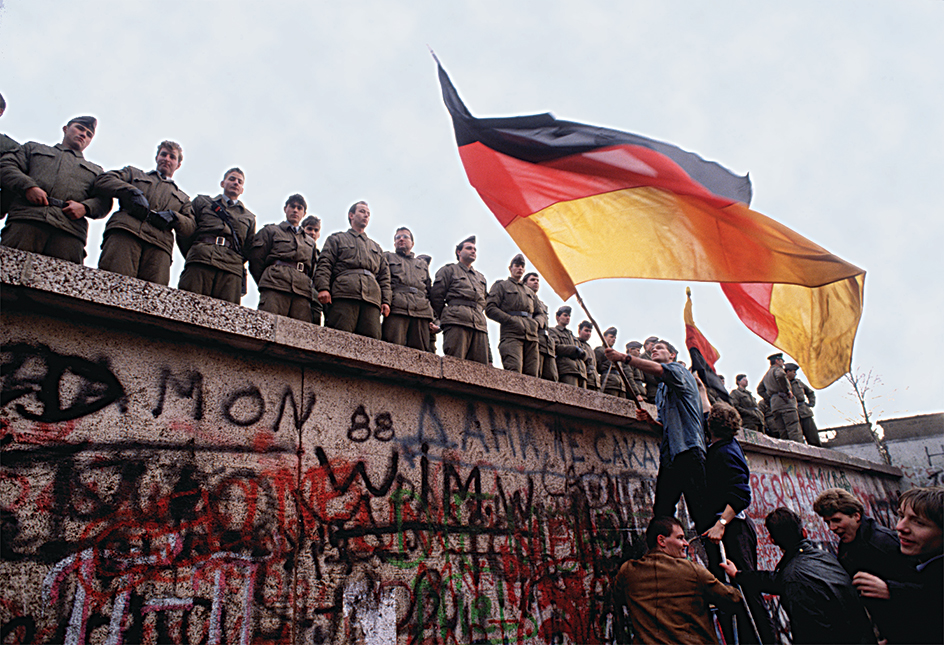
The city
Berlin covers an area of 343 square miles (888 square kilometers), and the entire metropolitan area lies within the city limits. The city has a diverse and, for Europe, unusually open urban landscape. Within the city limits lie many parks, lakes, gardens, and forested areas, and some open farmland. Berlin’s outer districts include suburbs that developed after unification and that resemble the suburbs of European and North American cities. Outside the city limits are rural areas in mostly flat, sandy countryside.
The downtown areas.
Two main downtown areas emerged in Berlin after the city was divided in the late 1940’s. One of them, in the administrative district called the Mitte (Center), is near the city’s original downtown area. Before World War II, this section of the city was the wealthiest area in Germany and the heart of Berlin’s business, cultural, and political life. It included Germany’s most important banking district and the headquarters of Germany’s leading book and newspaper publishers. This section also was the seat of government for the German Empire, formed in 1871, and the Nazi regime.

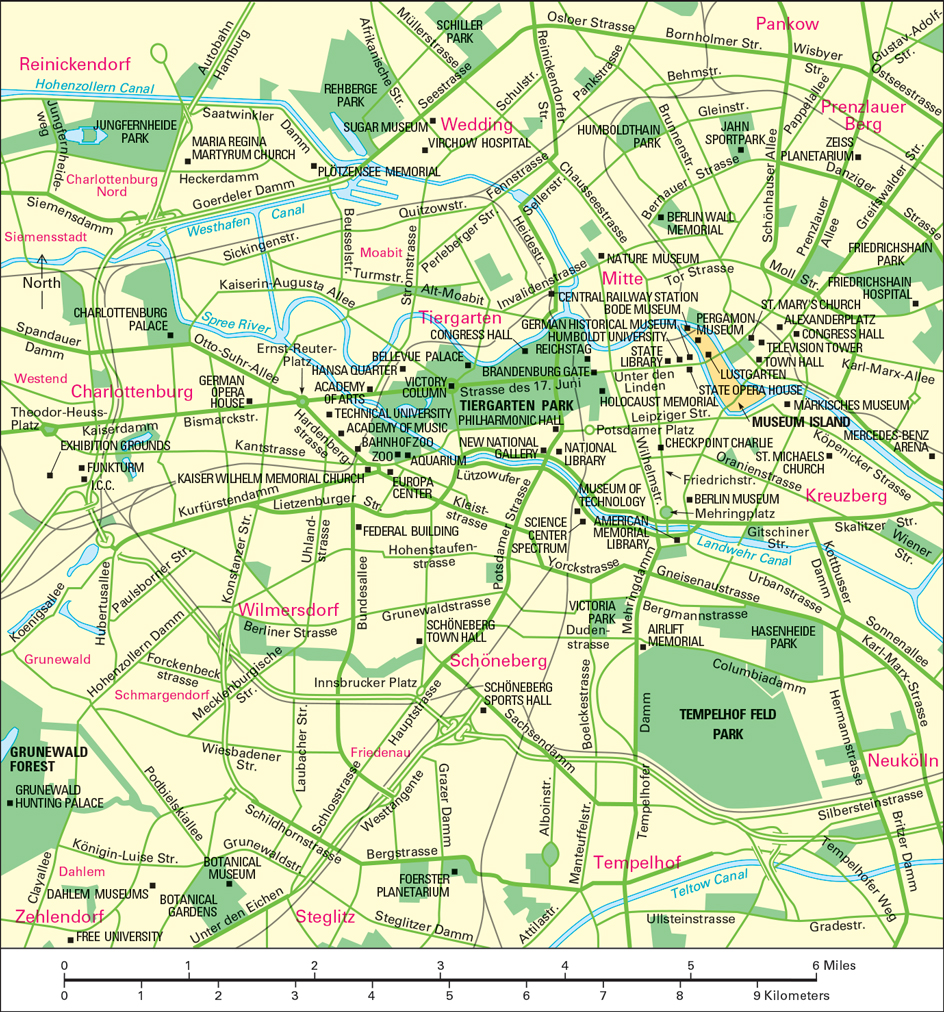
The Mitte was severely damaged in World War II and afterward became part of East Berlin. The East German government rebuilt the Mitte as downtown East Berlin.
Many of the Mitte’s cultural buildings cluster around a boulevard called Unter den Linden (Under the Linden Trees). They include the German State Library, the German State Opera House, and Humboldt University. A nearby island in the Spree River called Museum Island has many world-famous museums and art collections.
After World War II, a new downtown emerged west of the old one, near the Bahnhof Zoo railway station. Wide new boulevards, tall buildings, and sprawling parks replaced the war ruins in this area, which became the western part of downtown Berlin. Many department stores and banks are in the western downtown, along with hotels, cultural institutions, and theaters.
The most famous avenue in the western downtown area is Kurfurstendamm, an elegant shopping boulevard. At the east end of the Kurfurstendamm stands the Kaiser Wilhelm Memorial Church. The modern church building and a bell tower stand on either side of the original bombed-out tower, left standing as a reminder of World War II. Other landmarks in downtown West Berlin include Ernst-Reuter-Platz, one of Europe’s largest public squares; the railway station; and the Hansa Quarter, an area of houses, apartment buildings, and other structures designed in the 1950’s by leading architects from all over the world.
Between the two downtown areas stands a famous symbol of Berlin called the Brandenburg Gate—in German, Brandenburger Tor. The gate’s main part is a huge stone colonnade completed in 1791. Near the gate is the Memorial to the Murdered Jews of Europe, which commemorates the victims of the Holocaust, the systematic destruction of the Jews and others by the Nazis during the early 1940’s (see Holocaust ). The memorial consists of a field of artistically arranged concrete slabs. 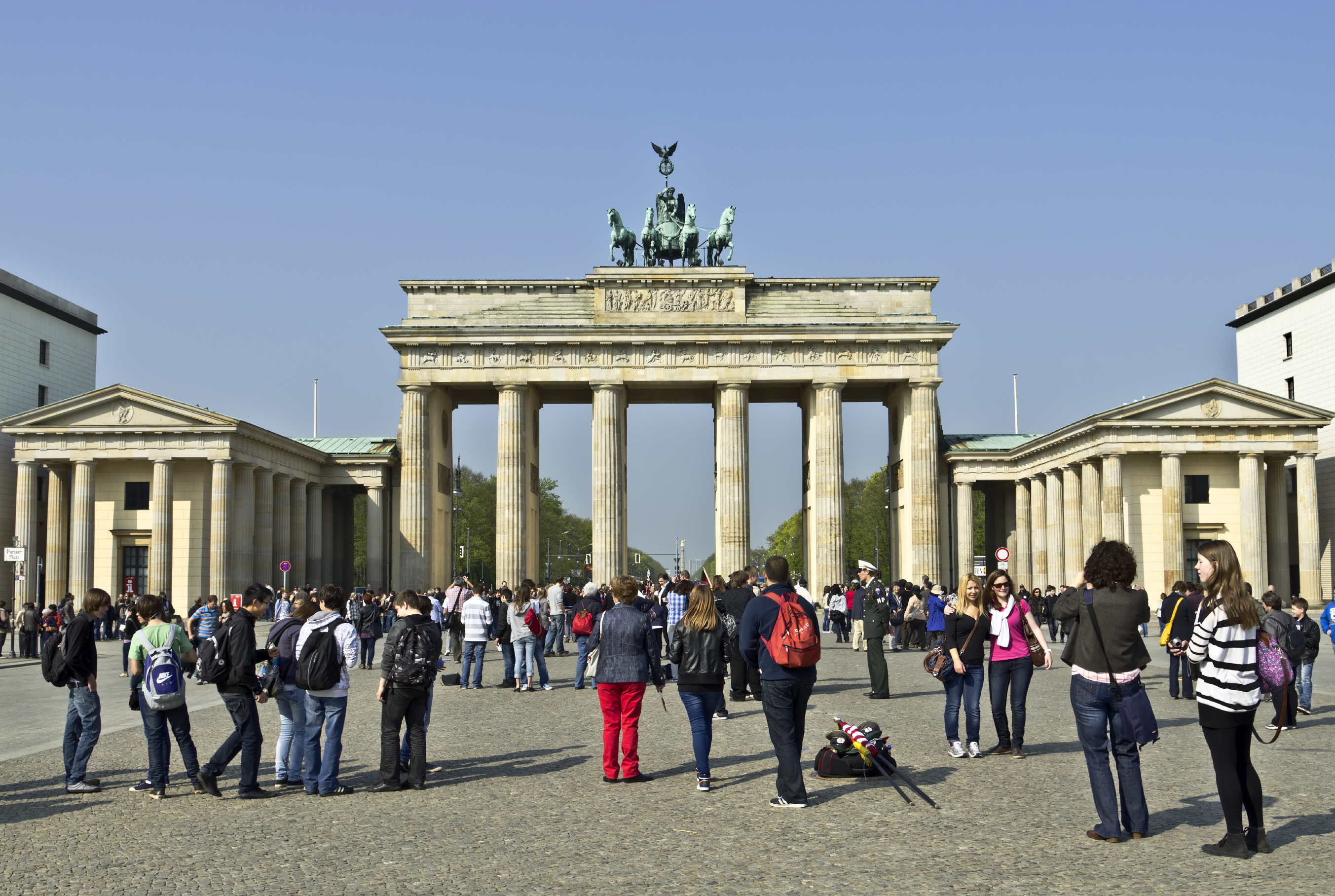
Residential areas
of Greater Berlin vary widely in population density, in their type of housing, and in the social and economic status of their residents. The city’s inner districts are much more densely populated than its outer ones. In the inner districts, including both downtown areas, most people live in crowded, multistory apartment buildings. Housing in some outer districts consists mainly of comfortable single-family homes and modern condominiums. The outlying districts also have large housing projects, especially in eastern Berlin.
Since the 1940’s, a shortage of housing has been a major problem. Air raids and ground fighting during World War II destroyed or severely damaged about one-third of all housing units. Some low-quality apartment buildings from the 1800’s and 1900’s survived the war. A number of these buildings are run-down, but others have been restored. Since reunification, immigration to Berlin has increased, worsening the housing problem. Thousands of Berliners are homeless. Some of them live in camping trailers, old construction huts, and tents gathered in squatter slums called Wagen-Dorfer (wagon villages) near the site of the old Berlin Wall.
Industrial areas
are scattered throughout Berlin. Most large manufacturing plants are in the city’s outlying districts. The largest firms operate near the main rail lines and along canals and the Spree and Havel rivers.
People
Ethnic groups and religion.
Citizens of other countries make up about 15 percent of Berlin’s population. Many of these people arrived as guest workers, laborers who came to find jobs. About half the guest workers are Turkish. Foreigners have also come from Greece, Italy, Poland, Russia, the United States, the former Yugoslavia, and various African and Asian nations.
The population of Berlin has grown rapidly since the end of World War II, when it had dropped to only 2,300,000. Factors contributing to the population growth included the return of residents evacuated during the war and a flow of East Germans into East Berlin. The large number of foreigners immigrating to the city also increased the population. Since the unification of the two Germanys, hundreds of thousands of newcomers have poured into the city.
About 25 percent of Berliners are Protestant, mostly Lutheran. Roman Catholics make up about 10 percent of the population. Several other religions are practiced by small segments of the population.
The arts.
Berlin is a world-renowned center of culture. Its festivals and exhibits attract millions of visitors each year. More than 50 nations take part in the Berlin Film Festival every year in February. Each September, the Berlin Festival Weeks highlight the start of the concert, opera, and theater season. Berlin has several major theaters, including the German Opera, Theater am Kurfurstendamm, German Theater, State Opera, and Comic Opera. The city is famous for its cabarets, cafes that offer entertainment, including political skits and comic songs. The Berlin Philharmonic Orchestra is one of the world’s finest orchestras.
Libraries and museums.
Important museums in Berlin include a group of state museums in the Dahlem district, among them a painting gallery and an anthropological museum. Museums on Museum Island include the Bode Museum; the Old National Gallery; and the Pergamon Museum, which houses the classical Greek Pergamon Altar. Other museums, including the German Historical Museum, are scattered throughout the city.
Berlin has several important archives and libraries. The German State Library is the world’s largest German-language library. Other major libraries include the Berlin State Library and the libraries at Humboldt University, Free University, and Technical University.
Education.
Berlin has the largest number and greatest variety of institutions of higher learning and research anywhere in Germany. Besides the three major state universities, there are several academies of music and art and private colleges. Other schools specialize in architecture, dance, education, film, and medicine.
Berlin is not only a city but also a state of Germany and controls its own public education system. All public schools in Berlin, including the state universities, are free. Kindergarten is available to all children ages 3 through 5, followed by six years of elementary school through age 11. After elementary school, students must choose one of three secondary school tracks: (1) a four-year program to prepare for a trade; (2) a four-year program leading to a job in engineering or another technical field; or (3) a seven-year program to prepare for a university.
Recreation.
Outdoor recreation and sports play an important role in the lives of Berliners. The city’s many lakes, rivers, and waterways provide opportunities for boating and fishing, and they are known for their large, well-kept beaches.
The Grunewald, a large forest along the Havel River, has riding and hiking paths, picnic areas, and playgrounds. Teufelsberg (Devil’s Mountain) is an artificial hill in the Grunewald used for rock climbing, skiing, and sledding. It was built from rubble left after World War II. Many parks are scattered throughout Berlin. One of the city’s largest parks, a former game reserve called the Tiergarten (Animal Garden), covers 630 acres (255 hectares) in the western downtown area. The Tiergarten has a zoo and an aquarium.
Many soccer matches are played in the Olympic Stadium near the Grunewald. Important matches have included the annual German Cup finals and parts of the 1974 and 2006 World Cup tournaments. The stadium, built for the 1936 Olympic Games, seats about 100,000 spectators.
Economy
Before World War II, Berlin had been Germany’s most important industrial and trading center. After the city was divided in the late 1940’s, West Berlin adopted a free enterprise economy, and the economy of East Berlin came under government control. Aid from the United States and West Germany helped bring rapid recovery in West Berlin. Continued West German aid enabled West Berlin to prosper despite its geographic isolation. The economy of East Berlin lagged by comparison.
Before the Berlin Wall was built in 1961, millions of East Germans fled to West Berlin or to West Germany. Others continued to live in East Berlin but worked in West Berlin. Communist officials had difficulty rebuilding East Berlin and developing its economy because so few skilled people remained. After the wall was built, production rose and conditions improved in East Berlin. However, low wages, government central planning, and high prices and limited availability of consumer goods resulted in a much lower standard of living for East Berliners than for West Berliners.
In November 1989, the East German government opened the Berlin Wall and announced sweeping economic reforms, including the sale of government-owned businesses to private citizens. In July 1990, the economies of East and West Germany united. Unprofitable businesses have been closed, and thousands of workers have been laid off. For more information on the economic union of East and West Germany, see Germany (Economy) .
Industries.
Most of Berlin’s labor force is employed in such service industries as finance, government, health care, real estate, retail trade, and transportation. Manufacturing in Berlin has declined since the unification of Germany. Berlin’s factories produce such goods as electrical products, chemicals, and machinery. Food processing is also an important industry in the city.
Transportation and communication.
Railway systems, including a number of high-speed trains, connect Berlin with many parts of Europe. Canal systems link the city with Germany’s main waterways and with a number of ports, including Hamburg on the North Sea. Berlin has an excellent public transportation system that includes buses, commuter trains, and streetcars. Its well-known S-Bahn (a rapid transit line called the Schnellbahn) and U-Bahn (a subway and ground-level train known as the Untergrundbahn) carry passengers to most parts of the city.
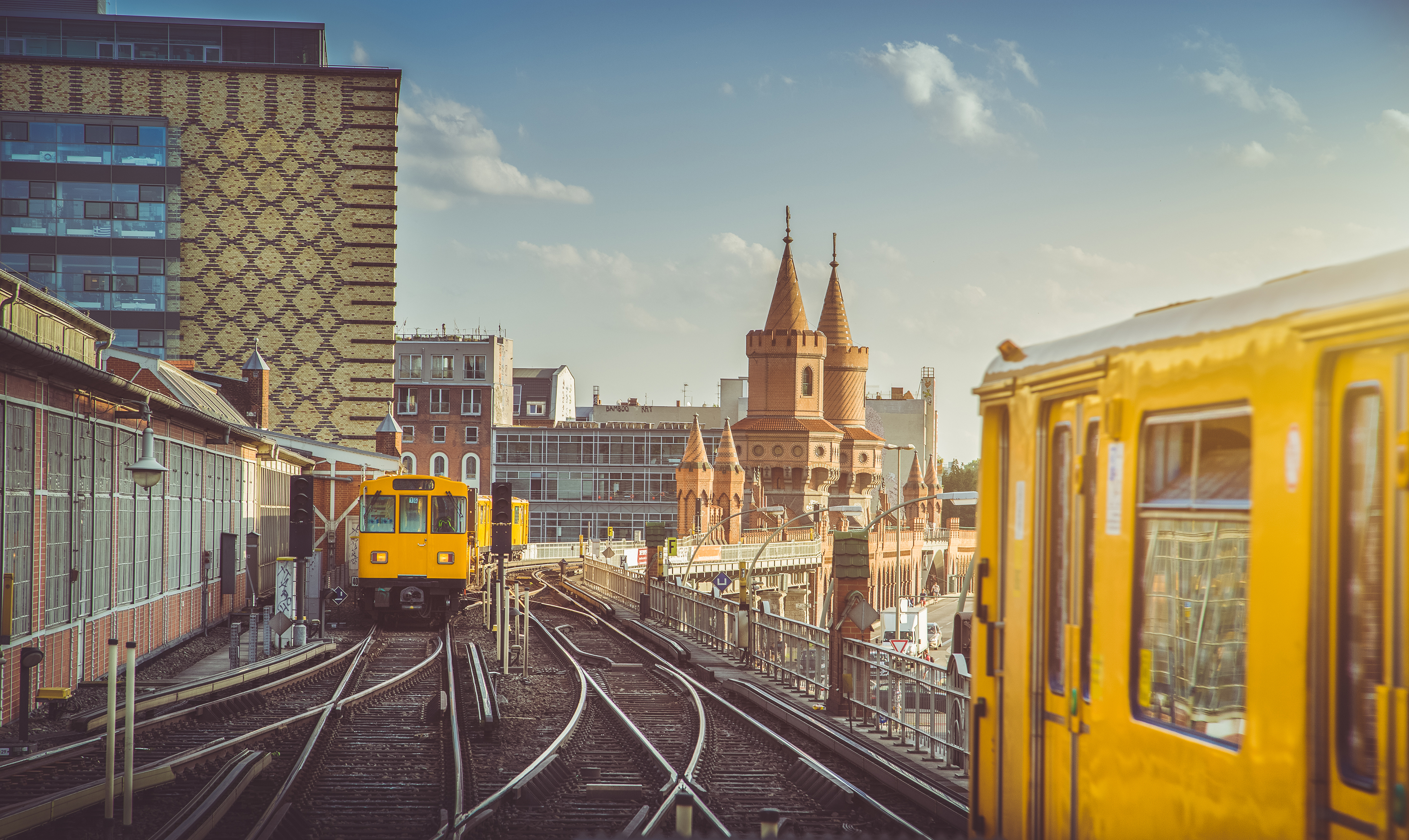
Airports have played a major role in Berlin’s development. In the late 1940’s, Western nations supplied blockaded West Berlin through the Tempelhof and Tegel airports. Schönefeld Airport, just south of the city, served East Berlin. Berlin Brandenburg Airport opened in 2020, and the Tegel and Schönefeld airports were closed.
Berlin has about 10 daily newspapers. The largest are the Berliner Morgenpost, Berliner Zeitung, and Der Tagesspiegel. Several television and radio stations, as well as satellite and cable TV systems, serve the city.
Government
The city of Berlin, also called Greater Berlin (in German, Gross Berlin), consists of 12 administrative districts. The people of Berlin elect about 150 members to a legislature called the Abgeordnetenhaus (House of Representatives). The House members make the city’s laws. They also elect the governing mayor, who is the government’s chief executive. Both the governing mayor and members of the House serve five-year terms. The governing mayor appoints a deputy mayor and a cabinet called the Senate with approval of the House. These officials direct the government departments.
In addition to being the capital of Germany, Berlin is also one of the country’s 16 states. The people of Berlin elect about 25 representatives to Germany’s Bundestag (larger house of the national legislature). Berlin also has four votes in the other house, the Bundesrat.
History
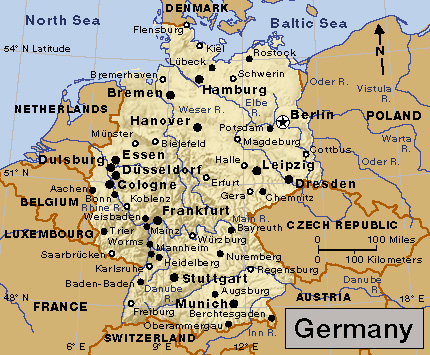
Early days.
About 1,500 years ago, various Slavic peoples lived in the area of present-day Berlin. During the A.D. 900’s, German emperors in western Europe extended the boundaries of their territories to the Oder River, just east of Berlin. German settlers began to occupy the new region in the 1100’s.
The village of Berlin grew up on the northeast bank of the Spree River. About the same time, the village of Kolln (or Colln) was founded on an island in the Spree. Historians do not know exactly when the villages were founded, but Kolln was first mentioned by name in a document in 1237 and Berlin in 1244. Both were trading centers. In 1307, Berlin and Kolln established a union for their joint defense and built a common town hall.
By the 1400’s, Berlin had become an important town in the German state of Brandenburg. The Hohenzollern family, who ruled Brandenburg, made Berlin their official home in the late 1400’s. The Thirty Years’ War, from 1618 to 1648, brought great misery to Berlin. The town was forced to house and pay for troops. In addition, Berlin was stricken by epidemics, and its suburbs were burned. By the end of the war, Berlin’s population had fallen to 6,000, about half its former size.
Prussian capital.
Berlin prospered again under the Great Elector, Frederick William, one of the Hohenzollern family. He ruled Brandenburg from 1640 to 1688. He encouraged industries and sponsored building projects. During his reign, the first canal was built between the Spree and the Oder rivers. His son Frederick I became the first king of Prussia in 1701 and made Berlin his capital. In 1710, Berlin, Kolln, and three neighboring communities united as the city of Berlin.
During the 1700’s, Berlin grew from a small town to a thriving trading and manufacturing center. The arts and sciences flourished, and industry expanded rapidly. The French armies of Emperor Napoleon I occupied Berlin from 1806 to 1808. After they left, the city prospered as the capital of Prussia, which had become a leading German power. When the German Empire was formed in 1871, Berlin became its capital. The city’s population rose from 826,000 in 1871 to 2,076,200 in 1910.
Years of unrest.
The German Empire collapsed at the end of World War I in 1918, and Berlin became the capital of Germany’s new Weimar Republic. Strikes, riots, and inflation plagued the city during the postwar years. But Berlin continued to grow. In 1920, 7 cities, 59 villages, and 27 estates were annexed into Berlin. The 7 cities, which are now residential neighborhoods of Berlin, were Charlottenburg, Kopenick, Lichtenberg, Neukolln, Schoneberg, Spandau, and Wilmersdorf.
Berlin was hard hit by the worldwide economic depression of the 1930’s. Hunger, unemployment, and widespread discontent paved the way for Adolf Hitler to seize power in 1933.
World War II
nearly wiped out Berlin. About a third of the city was destroyed, and some 152,000 civilians lost their lives. The damage and deaths resulted mostly from Allied bombing raids throughout the war, and from an extended land battle for Berlin in 1945.
The victorious Allies took over Berlin in 1945 and divided the city into four sectors. Britain, France, the Soviet Union, and the United States each occupied one sector. They also divided Germany into four zones.
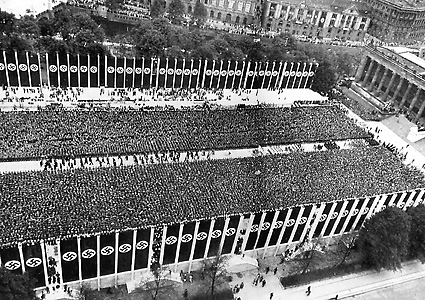

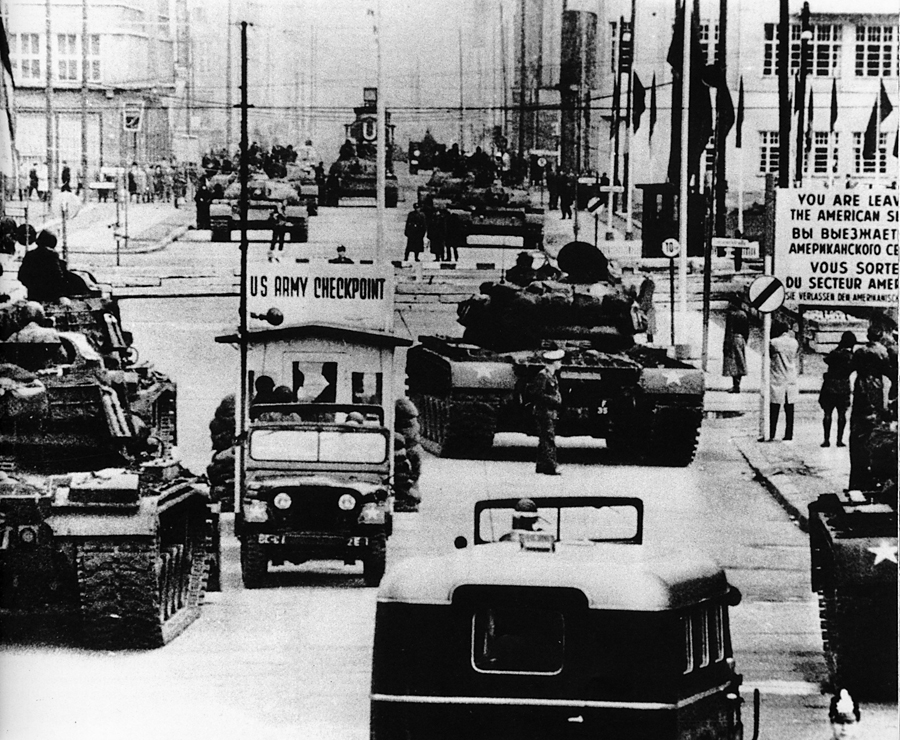
The Soviet blockade.
Although Berlin lay within the Soviet zone of occupation, the Western powers expected the Soviet Union to permit them free access to the city. However, in June 1948, the Soviet Union blocked all rail, water, and highway routes through the Soviet zone to the Western sectors of Berlin.
The Soviets hoped the blockade would drive Western troops out of Berlin. But Western nations organized a gigantic airlift to supply West Berliners with needed goods. At the height of this project, called the Berlin Airlift, planes landed in West Berlin at the rate of one every one to two minutes. General Lucius D. Clay, the commander of the U.S. armed forces in Europe, directed the airlift. The Soviets finally ended the blockade in May 1949, and the airlift stopped that September.
A divided city.
In late 1948, East and West Berlin established separate governments. Each city had its own police, currency, and public utilities systems. In 1949, the three Western zones of Germany were combined as West Germany, and the Soviet zone became East Germany. East Berlin became East Germany’s capital. West Berlin became an unofficial state of West Germany. Bonn was made West Germany’s capital. During the 1950’s, travel between the two parts of Berlin was generally unrestricted. As a result, West Berlin became a way for thousands of East Germans to escape Communism.
The Berlin Wall.
By 1961, more than 1,000 East Germans were fleeing to West Berlin every day. On Aug. 13, 1961, East German police began building a wall of concrete and barbed wire to divide the two parts of the city. Some East Germans escaped to West Berlin after the Berlin Wall was built, but many others died trying to escape. Most of those who died were shot by border guards. Lying deep within Communist East Germany, West Berlin was an isolated outpost of democracy and faced constant threats of cutoffs of supplies.
Loading the player...Berlin Wall
In 1971, Britain, France, the Soviet Union, and the United States signed an agreement on the status of Berlin. The pact stated that West Berlin was not part of West Germany. But it also provided for political and economic ties and free movement between West Germany and West Berlin. During the 1970’s and 1980’s, relations between East and West Berlin improved slightly.
A united Berlin.
In 1989, large numbers of East Germans fled to West Germany by way of Hungary, Czechoslovakia, and Poland. Meanwhile, widespread demonstrations demanding greater freedom broke out in East Germany. In November 1989—in response to the protests—the East German government ended all restrictions on travel and emigration by East Germans. As a result, the 28-year-old Berlin Wall was opened.
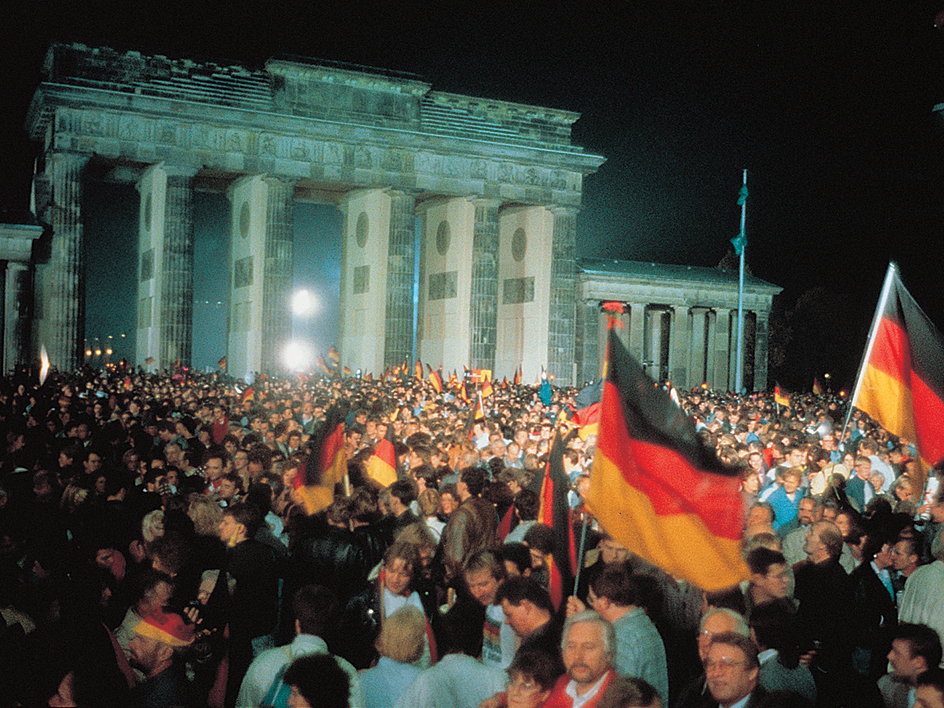
In March 1990, in free elections in East Germany, non-Communists won control. In October, East and West Germany united into a single nation. Berlin was declared the capital, but Bonn continued to function as the capital. In 1991, the Bundestag voted to move most government offices and activities to Berlin.
One of Berlin’s major challenges in the 1990’s was to generate greater public revenue and taxes. After reunification, Berlin acquired many of East Berlin’s economic problems. As a result, funds were needed for public housing, education, unemployment compensation, higher wages, pensions, social security, and health benefits. Many believed that an increase in government jobs resulting from Berlin’s restored role as Germany’s capital would help invigorate the economy.
East Berliners hoped a reunified city would achieve the former West Berlin standard of living. But this goal led to conflicts among social and political groups. In 1993, a strike by steelworkers in eastern Germany, including the former East Berlin, won a gradual increase of wages to western German levels.
Recent developments.
In 1999, many government offices moved from Bonn to Berlin. The Reichstag, the parliament building of both the German Empire and the Nazi government, became the new home of the Bundestag. In 2001, the new offices of Germany’s chancellor opened in Berlin. New government buildings stand where the eastern and western downtowns once met, thus symbolically linking the previously divided city. The Berlin Hauptbahnhof, Europe’s largest railway station, began operations in 2006.
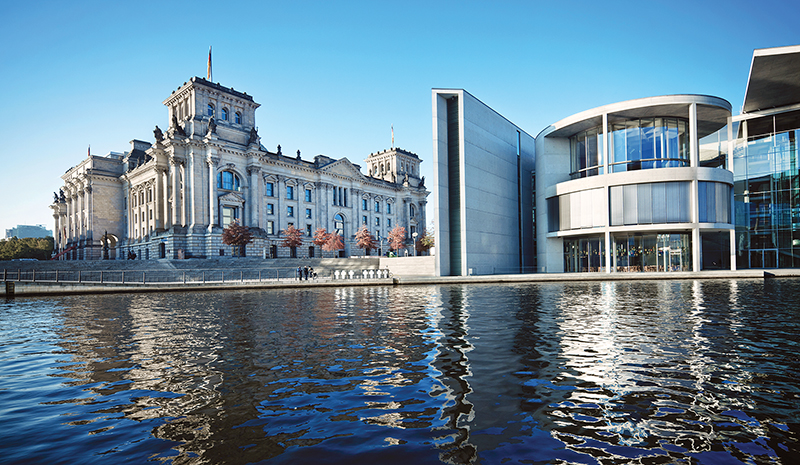
The construction of Berlin Brandenburg Airport, near the southern edge of the city, was delayed for years because of mismanagement. The airport, which absorbed parts of the adjacent Schönefeld Airport, opened in October 2020. Tegel Airport, near the city center, closed shortly afterward.
